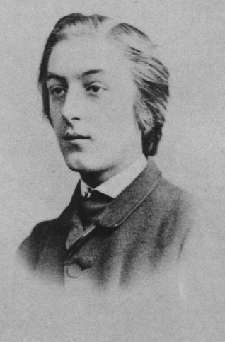Corpus Study and Stochastic Grammar
by
Bruce Hayes, Department of Linguistics, UCLA
Claire Moore-Cantwell, Department of Linguistics, Simon Fraser University
Phonology 28:235-282.

| Gerard Manley Hopkins's Sprung Rhythm: Corpus Study and Stochastic Grammar by Bruce Hayes, Department of Linguistics, UCLA Claire Moore-Cantwell, Department of Linguistics, Simon Fraser University Phonology 28:235-282.
|
 |
Gerard Manley Hopkins wrote many of his poems in a meter he called
“sprung rhythm.” This meter is one of the best known puzzles of English
metrics. Kiparsky (1989) presented a novel analysis of this meter emphasizing
syllable quantity, which forms the starting point of our study. We began by
re-evaluating Kiparsky’s proposal using digital technology: we created a file
in which 583 sprung rhythm lines were coded for stress, syllable weight, and
phonological phrasing, then developed a computer program that located every
scansion of these lines compatible with the Kiparskyan analysis.
On the basis of this study we claim that Kiparsky’s principles are
correct as far as they go, in that they suffer from extremely few exceptions.
However, the Kiparskyan analysis is incomplete: because it uses only inviolable
constraints, it permits dozens or even hundreds of scansions for certain sprung
rhythm lines. We propose a typologically-supported Parsability Principle for
metrics mandating that ambiguity of scansion be minimized, and suggest that
under this proposal, the Kiparskyan system is not a possible meter. We then
offer a revised analysis that adds ten new constraints to the Kiparskyan
grammar and recasts it as a stochastic maxent grammar. This grammar produces an
acceptably low level of ambiguity in metrical parsing, and is empirically
supported by the close matchup of its predictions with the diacritical marks
that
These are supplementary materials for documentation and checking.
These are simple text files, so please download them first (right click, "save link"), and open them on your own computer.